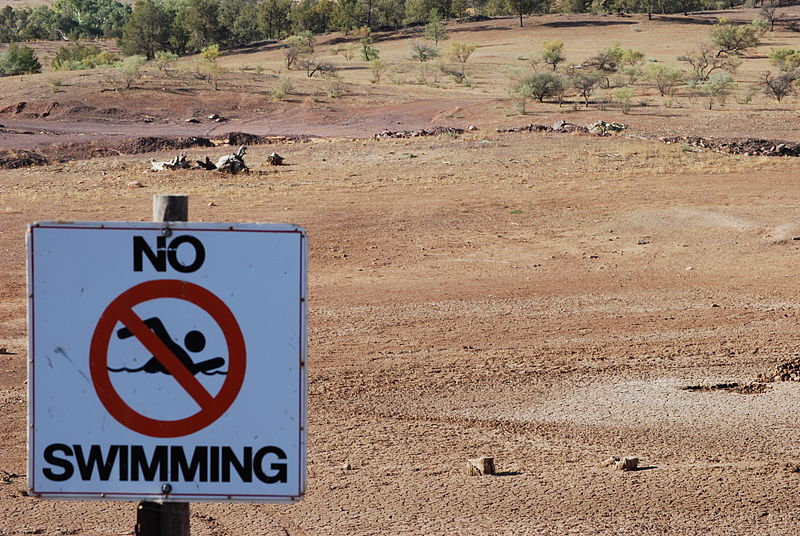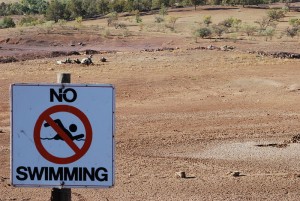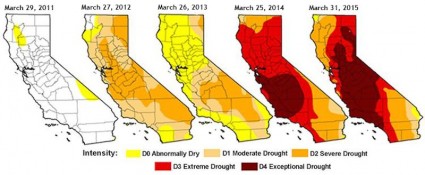 A lot of people out there don’t like when I write these kinds of articles, because they directly contradict the false narrative that humanity has an extremely bright future ahead. Sadly, the truth is that our planet and everything that lives on it is rapidly deteriorating. And I am not talking about the false environmentalism being pushed by the mainstream media, Greta Thunberg and countless well-funded NGOs. What I am talking about is the stuff that is happening right in our face. We are systematically poisoning our planet, thousands upon thousands of species are going extinct, and we are literally running out of all of our most important natural resources. There isn’t going to be enough of anything in the not too distant future. In fact, even National Geographic is admitting that up to five billion people could soon be facing “shortages of food and clean water”…
A lot of people out there don’t like when I write these kinds of articles, because they directly contradict the false narrative that humanity has an extremely bright future ahead. Sadly, the truth is that our planet and everything that lives on it is rapidly deteriorating. And I am not talking about the false environmentalism being pushed by the mainstream media, Greta Thunberg and countless well-funded NGOs. What I am talking about is the stuff that is happening right in our face. We are systematically poisoning our planet, thousands upon thousands of species are going extinct, and we are literally running out of all of our most important natural resources. There isn’t going to be enough of anything in the not too distant future. In fact, even National Geographic is admitting that up to five billion people could soon be facing “shortages of food and clean water”…
As many as five billion people, particularly in Africa and South Asia, are likely to face shortages of food and clean water in the coming decades as nature declines. Hundreds of millions more could be vulnerable to increased risks of severe coastal storms, according to the first-ever model examining how nature and humans can survive together.
“I hope no one is shocked that billions of people could be impacted by 2050,” says Rebecca Chaplin-Kramer a landscape ecologist at Stanford University. “We know we are dependent on nature for many things,” says Chaplin-Kramer, lead author of the paper “Global Modeling Of Nature’s Contributions To People” published in Science.
The clock is literally ticking for humanity, but meanwhile we spend immense amounts of energy on relatively meaningless political squabbles.
Look, the reality of the matter is that this is going to happen no matter which political party is in control of the White House. We are in very big trouble, and nobody really has any idea how we can possibly turn things around.
At this point, we are running out of topsoil at a staggering rate. In fact, we have already lost “nearly half of the most productive soil” within the last 150 years…
The world grows 95% of its food in the uppermost layer of soil, making topsoil one of the most important components of our food system. But thanks to conventional farming practices, nearly half of the most productive soil has disappeared in the world in the last 150 years, threatening crop yields and contributing to nutrient pollution, dead zones and erosion. In the US alone, soil on cropland is eroding 10 times faster than it can be replenished.
If we continue to degrade the soil at the rate we are now, the world could run out of topsoil in about 60 years, according to Maria-Helena Semedo of the UN’s Food and Agriculture Organization.
So do any of you have a viable plan for how we can stop losing our topsoil?
Because if nobody has a plan, mass starvation is an absolute certainty. Even if we found a way to save our topsoil, we aren’t going to have anyone to pollinate our crops because all of the insects are dying. I covered this phenomenon in a previous article entitled “Insect Species Are Rapidly Going Extinct Across The Globe – All Insects Could Be Gone ‘In 100 Years'”.
And without enough insects to eat, the bird population is rapidly declining as well. This is something that I wrote about in a previous article entitled “North America’s Bird Population Is Collapsing – Nearly 3 Billion Birds Have Been Wiped Out Since 1970”.
Despite all of our advanced technology, we can’t seem to do much of anything to stop the death and decay that we see all over the globe.
Even the human race is steadily deteriorating. Scientists tell us that humans are now smaller, shorter, weaker and dumber than our ancestors were thousands of years ago. Today, our genes contain tens of thousands of mistakes (mutations), and those mistakes are passed on to the next generation. And each new generation adds additional mistakes (mutations) to the gene pool, and so over time the number of mutations being passed on continues to grow. In virtually every case those mutations are harmful, and we have absolutely no way to stop this systematic decay of the human genome.
Literally, our planet and everything in it is falling apart.
Here in the western world, things may seem okay for the moment because our debt-fueled lifestyles and our advanced technology allow us to live fairly comfortable lives.
But things are already starting to change, and global events are accelerating at a pace that is very alarming. As the fabric of our society unravels (#ad), it is going to be imperative to have others that you can lean on for support.
Unfortunately, making friends is not something that most of us are very good at doing. In fact, one recent study discovered that the average American adult “hasn’t made a new friend in the last five years”…
Spending time in the company of good friends regularly has been shown to have a positive impact on health. But for many Americans, socializing in adulthood gets harder with age. A recent survey reveals that 45% of adults admit they find it hard to make new friends. In fact, the average adult hasn’t made a new friend in the last five years, according to the survey.
In this day and age, our screens have become our friends. We spend countless hours with our televisions, our phones and our computers. Meanwhile, many of us don’t have any idea how the people living right next door are doing.
One of the reasons why I write so many articles is because that is how I can reach the most people.
If the most effective way of waking people up was traveling the country and holding meetings, I would do it.
But these days it is exceedingly difficult to get people to leave their homes and go to a meeting. But once I publish this article on the Internet, it will be seen by enough people to easily fill a sports stadium.
The Internet is where the battle for hearts and minds is being won or lost, and we need to do all that we can to wake more people up.
Because the clock is ticking for humanity, and the destiny of billions hangs in the balance.
About the Author: I am a voice crying out for change in a society that generally seems content to stay asleep. I am the publisher of The Economic Collapse Blog, End Of The American Dream and The Most Important News, and the articles that I publish on those sites are republished on dozens of other prominent websites all over the globe. I have written four books that are available on Amazon.com including The Beginning Of The End, Get Prepared Now, and Living A Life That Really Matters. (#CommissionsEarned) By purchasing those books you help to support my work. I always freely and happily allow others to republish my articles in written form on their own websites as long as this “About the Author” section is included. In order to comply with government regulations, I need to tell you that the controversial opinions in this article are mine alone and do not necessarily reflect the views of the websites where my work is republished. This article may contain opinions on political matters, but it is not intended to promote the candidacy of any particular political candidate. You can follow me on social media on Facebook and Twitter. The material contained in this article is for general information purposes only, and readers should consult licensed professionals before making any legal, business, financial or health decisions. Those responding to this article by making comments are solely responsible for their viewpoints, and those viewpoints do not necessarily represent the viewpoints of Michael Snyder or the operators of this website.





